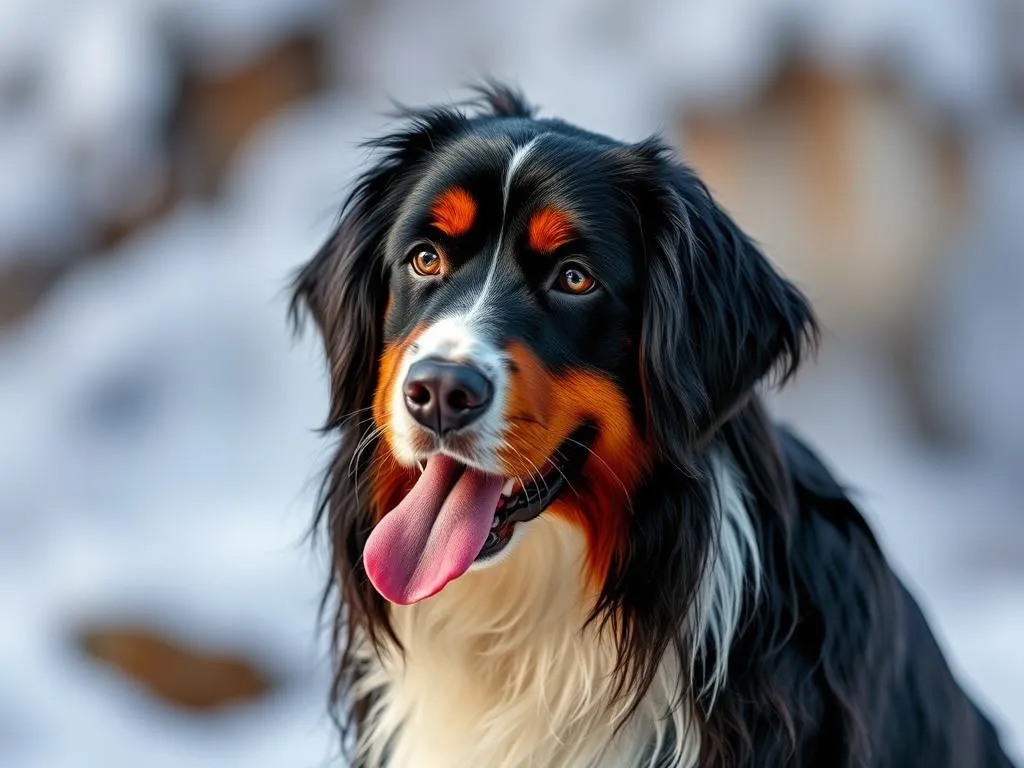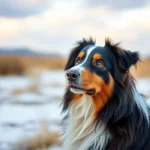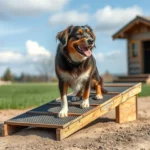
Introduction
When it comes to dog health care, grooming plays a pivotal role that extends beyond aesthetics. Bernese Mountain Dogs, known for their striking tri-color coats and gentle temperament, require special attention in grooming to ensure their health and well-being. This breed, while beautiful and affectionate, is prone to certain health issues that can be exacerbated by neglecting proper grooming practices. Understanding the grooming needs of your Bernese Mountain Dog is essential for maintaining not only their appearance but also their overall health.
Understanding the Bernese Mountain Dog
Breed Overview
The Bernese Mountain Dog hails from the Swiss Alps, where they were originally bred as working dogs. Their strong build and impressive strength made them excellent herders, draft animals, and guardians. Typically, adult Bernese males weigh between 80 to 115 pounds, while females range from 70 to 95 pounds. Their long, thick coat is designed to protect them from harsh weather conditions, but it also requires regular maintenance to prevent matting and skin problems.
In terms of temperament, Bernese Mountain Dogs are known for their calm and affectionate nature. They are social animals that thrive on companionship, making them great family pets. However, like all breeds, they are susceptible to specific health issues, including hip dysplasia, elbow dysplasia, and certain types of cancer. Regular grooming not only helps manage their beautiful coats but can also aid in early detection of these health problems.
The Importance of Grooming for Bernese Mountain Dogs
Grooming is not merely about keeping your dog looking good; it is integral to their overall health. For Bernese Mountain Dogs, regular grooming serves several important functions:
- Maintaining Coat Condition: Their thick, double coat can become matted if not groomed regularly, leading to skin irritations and infections.
- Skin Health: Regular brushing helps distribute natural oils, keeping the skin healthy and reducing the risk of dermatitis.
- Psychological Well-Being: Grooming can be a bonding experience, reducing anxiety and stress for your dog.
Given the heavy shedding associated with this breed, establishing a consistent grooming routine is crucial for both you and your dog.
Grooming Essentials for Bernese Mountain Dogs
Grooming Tools Required
To effectively groom your Bernese Mountain Dog, you’ll need the right tools. Here’s a list of essential grooming items:
- Slicker Brush: Ideal for removing tangles and loose hair.
- Undercoat Rake: Helps manage shedding by reaching the undercoat.
- Comb: Useful for detangling and finishing touches.
- Dog Clippers: For trimming areas like the paws and around the face.
- Scissors: For precise trimming in sensitive areas.
- Dog Shampoo: Choose a gentle, hypoallergenic shampoo for bathing.
Using dog-specific grooming tools is essential to avoid causing injury or discomfort to your pet. Brands like FURminator and Earthbath offer quality products that are well-suited for grooming Bernese Mountain Dogs.
Frequency of Grooming
Bernese Mountain Dogs require a specific grooming schedule to keep their coats healthy:
- Brushing: Ideally, they should be brushed 2-3 times a week, increasing to daily during shedding seasons (spring and fall).
- Bathing: Baths are generally recommended every 6-8 weeks, or as needed if they become particularly dirty.
- Nail Trimming: Nail care should be done every 3-4 weeks, depending on your dog’s activity level.
Watch for signs that your dog may need more frequent grooming, such as excessive shedding, matted fur, or an unpleasant odor.
Step-by-Step Grooming Process
Brushing
Brushing is one of the most critical aspects of grooming a Bernese Mountain Dog. To brush effectively:
- Start with the Undercoat: Use an undercoat rake to remove loose hair from the undercoat.
- Tackle Tangles: For tangles and mats, use a slicker brush. Always brush gently to avoid hurting your dog.
- Finish with a Comb: A comb can help catch any remaining tangles and distribute oils evenly across the coat.
Recommended brushing frequency is at least twice a week, increasing to daily during shedding seasons.
Bathing
Bathing is another crucial part of grooming. Follow these guidelines:
- Choose the Right Shampoo: Select a gentle, dog-specific shampoo to avoid skin irritation.
- Prepare the Area: Use a bathtub or a large basin, and ensure the water is lukewarm.
- Wet the Coat: Thoroughly wet your dog’s coat, avoiding their eyes and ears.
- Lather and Rinse: Apply shampoo, lather well, and rinse thoroughly to remove all product.
- Dry Your Dog: Use a towel to dry your dog, and if they tolerate it, a blow dryer on a low setting can help.
Bathing should be done every 6-8 weeks, or more frequently if your dog gets dirty.
Nail Trimming
Nail care is an essential part of grooming to ensure your dog’s health and mobility. Follow these steps for safe nail trimming:
- Choose the Right Tools: Use dog-specific nail clippers or a Dremel tool.
- Identify the Quick: Be cautious not to cut into the quick (the pink area inside the nail) as it can cause bleeding.
- Trim Gradually: If your dog is nervous, take small amounts off at a time.
- Reward Your Dog: Always reward your dog afterward to create a positive association with nail trimming.
Signs that your dog’s nails need trimming include excessive clicking on the floor or difficulty walking.
Ear Cleaning
Ear hygiene is essential for Bernese Mountain Dogs, as their long ears can trap moisture and debris. Here’s how to clean them:
- Gather Supplies: Use a cotton ball or pad and a dog-specific ear cleaner.
- Moisten the Cotton: Apply the cleaner to the cotton pad.
- Wipe the Ear: Gently wipe the visible part of the ear, avoiding the ear canal.
- Check for Signs of Infection: If you notice redness, swelling, or an unpleasant odor, consult your veterinarian.
Regular ear cleaning helps prevent infections and keeps your dog comfortable.
Teeth Cleaning
Dental hygiene is another crucial aspect of your dog’s grooming routine. Here’s how to keep your dog’s teeth clean:
- Choose the Right Toothbrush and Toothpaste: Use a dog toothbrush and toothpaste specially formulated for pets.
- Get Your Dog Used to the Process: Allow your dog to taste the toothpaste before starting.
- Brush Gently: Brush in circular motions, focusing on the gum line.
- Regular Checkups: Schedule regular dental checkups with your veterinarian.
Aim to brush your dog’s teeth at least 2-3 times a week to maintain oral health.
Special Considerations for Bernese Mountain Dogs
Dealing with Shedding
Bernese Mountain Dogs are known to shed heavily, particularly during seasonal changes. Understanding their shedding cycle can help you manage it effectively:
- Spring Shedding: As winter coats begin to shed, expect increased hair loss.
- Fall Shedding: Dogs will shed their summer coats in preparation for winter.
To manage shedding:
- Regular Brushing: Frequent brushing helps collect loose hairs before they spread throughout your home.
- Quality Diet: Ensure your dog is on a high-quality diet to promote healthy skin and coat.
- Shedding Tools: Consider using a shedding blade or de-shedding tool specifically designed for heavy shedders.
Grooming for Health Issues
Bernese Mountain Dogs are predisposed to various health issues, such as hip dysplasia and bloat. Regular grooming can help you notice symptoms early:
- Check for Lumps: While grooming, feel for unusual lumps or changes in your dog’s body.
- Observe Behavior: Changes in behavior during grooming can signal discomfort or pain.
If you notice anything unusual during grooming, consult your veterinarian promptly to address any potential health concerns.
Professional Grooming vs. At-Home Grooming
Benefits of Professional Grooming
While at-home grooming is essential, there are benefits to opting for professional grooming services:
- Expertise: Professional groomers are trained to handle various breeds and can identify grooming needs you may overlook.
- Specialized Techniques: They have access to specialized tools and techniques that can enhance your dog’s grooming experience.
- Time-Saving: If your schedule is tight, a professional groomer can save you time and ensure your dog is well taken care of.
DIY Grooming Tips
For those who prefer to groom at home, here are some tips to make the process smoother:
- Establish a Routine: Set a regular grooming schedule so your dog becomes accustomed to the process.
- Stay Calm: Keep a calm demeanor to help your dog feel relaxed during grooming.
- Use Treats: Reward your dog with treats and praise to create a positive experience.
While DIY grooming can be cost-effective, know when to seek professional help if you encounter challenges.
Conclusion
Grooming is an essential component of maintaining the health and happiness of your Bernese Mountain Dog. From brushing to bathing and everything in between, establishing a routine can prevent health issues and strengthen your bond with your pet. Regular grooming not only keeps your dog looking great but also contributes to their overall well-being. By investing the time and effort in grooming, you ensure a happy, healthy life for your beloved companion.









